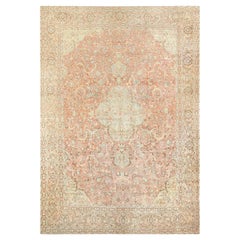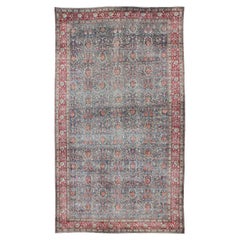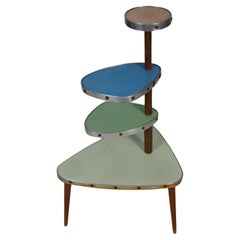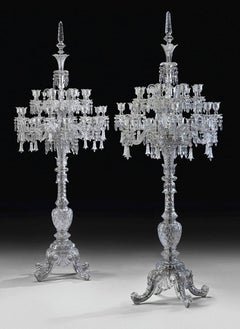18 Century Tabriz Palace Rug
Early 20th Century Persian Tabriz Persian Rugs
Wool
Antique 1890s Persian Tabriz Persian Rugs
Wool
People Also Browsed
Antique Mid-19th Century German Mid-Century Modern Planters and Jardinieres
Wood
20th Century French Floor Lamps
Crystal
Antique 18th Century and Earlier Tibetan Religious Items
Antique 15th Century and Earlier Korean Archaistic Ceramics
Ceramic
Antique 18th Century Swedish Primitive Sculptures and Carvings
Wood
Antique 1840s Japanese Edo Textiles
Silk
Antique 15th Century and Earlier Korean Archaistic Ceramics
Ceramic
Early 20th Century Persian Islamic Persian Rugs
Wool
Antique 19th Century European Archaistic Tapestries
Textile, Wood
Vintage 1920s French Art Deco Glass
Glass
Antique Late 19th Century Persian Serapi Persian Rugs
Wool
Antique 19th Century Indian Architectural Elements
Wood
Antique 1890s English Regency Pedestals
Mahogany
Antique 16th Century Korean Archaistic Ceramics
Ceramic
Early 20th Century Persian Islamic Persian Rugs
Wool
Antique Late 19th Century Tibetan Tibetan Chinese and East Asian Rugs
Wool
18 Century Tabriz Palace Rug For Sale on 1stDibs
How Much is a 18 Century Tabriz Palace Rug?
A Close Look at tabriz Furniture
Tabrīz rugs and carpets are named for their place of origin — the northwestern Iranian city of Tabrīz (or Tabriz). To collectors of antique and vintage Persian carpets and rugs, it is one of history’s best-known hubs for textiles and other handicrafts. Tabriz is among the most populous cities in Iran and home to a rich tradition of hand-knotted rugs. The region’s weavers and their craft flourished under the Safavid dynasty between the 12th and 16th centuries after the Safavids wrested control of the city from the Turks.
Aside from asymmetrical knots, the characteristics of antique Tabriz rugs and carpets include intricate patterns and designs woven from silk and wool. (Antique rugs are primarily woven from the latter.) Like Turkish rugs, Tabriz and other Persian rugs often reflect the region where they were made and typically feature floral and garden motifs with bold maroon, gold and red palettes. The most iconic motif found in Tabriz rugs is a central medallion that radiates outward into other star-shaped pendants and cartouches, with quarter medallions positioned on the corners, while special variations feature curling arabesque floral motifs and hunting scenes. There are rich hues of ivory, copper, terracotta and burgundy with complementing highlights of navy blue and deep green.
While weavers traditionally rely on their fingers to produce the knots in Persian rugs and carpets, local weavers in Tabriz utilize a knife with a buttonhook-like projection to increase their speed. Some of the region’s artisans have set records for weaving faster than one knot per second. These rugs feature an integration of knots that are both Persian and Turkish in origin, and have a double weft made with cotton, wool or silk and cotton warps. This unique process makes these textiles the product of one of the finest and most delicate rug-making traditions in the world.
Tabriz carpets, along with other types of Persian rugs, have experienced a contemporary revival in the past few decades and are a coveted and distinctive piece of craftsmanship in many homes and other interior spaces.
Find a collection of antique and vintage Tabriz rugs and carpets, wall decorations and other furniture on 1stDibs.
Finding the Right persian-rugs for You
Make a bold statement in a living room or bedroom by incorporating vintage Persian rugs in your home decor.
A Persian carpet lends an aura of prestige to any room, even today. The fascination with Persian rugs dates at least as far back as the 4th century B.C., when historian Xenophon referred to the “soft rugs on which the Persians sit.” For centuries, Iran (modern-day Persia) has been known for the craftsmanship, intricate patterns and artistry of its carpets, which have found their way into households and museums around the world.
Although they have many imitators, real Persian rugs are made only in Iran and are easily recognized by their vibrant colors and elegant patterns.
Traditional, or antique, Persian rugs are what most people identify as “authentic.” Hand-made, they are very durable and, if properly cared for, can be passed down from generation to generation. Modern Persians, on the other hand, are often machine-made. Today’s carpets, Iranian or otherwise, can’t possibly match the level of craftsmanship that prevailed centuries ago, so historical Persian carpets will always be admired and highly valued.
Although the machine-aided production process is much faster and cheaper, the resulting rugs typically do not have the same quality or lifespan as handwoven ones, so traditional options are considered better investments.
To distinguish between the two, look for imperfections. Because traditional Persian rugs are handwoven, you will likely see small flaws on the front and back. With a machine-made imitation, on the other hand, you will probably not find stitching glitches, and the back will have a mesh or plastic covering.
Antique rugs are handmade from the finest materials, including wool, silk or cotton — never synthetic fibers. The fibers used in antique rugs are colored using natural dyes derived from insects and plants and woven into bold designs that reflect Iran’s culture and history. Since Persian tribes traditionally raised and herded sheep, wool was the most common material. The fiber has many advantages: It is fire-resistant and dries much more quickly than cotton. Also, because of its natural elasticity, it is more durable than cotton or silk. Regarded as works of art, Persian rugs can take months or years to complete.
The different types of Persian rugs are named for the cities, villages and regions where they’re made. Kashan rugs, for example, woven in the north-central Iranian city of Kashan, are considered among the finest city rugs, distinguished by curvilinear motifs like palmettos, leaves and arabesques. Nains have high knot counts, an indication of high quality, and generally employ pink, blue and ivory hues, while Tabriz rugs — created by weavers in the northwestern Iranian city of Tabrīz (or Tabriz) — mostly have floral and garden patterns.
When shopping for vintage Persian rugs, you'll want to consider color, size and more — for a history of these rugs and tips on how to style yours, visit our guide to these woven creations today.
Find Tabriz rugs, handmade silk Persian rugs, Persian tribal rugs and other antique and vintage rugs from the world's best furniture dealers on 1stDibs.



